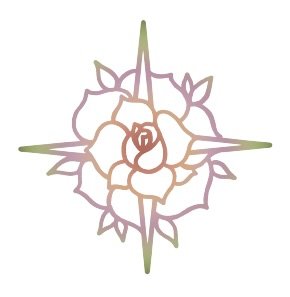Mindfulness for Moms - Part 2
Mindfulness for Moms by Cheryl Reeley LCSW, MS, PMH-C Anxiety Therapy Austin
Common misconceptions about mindfulness.
If you remember from Part 1, mindfulness is the act of purposefully paying attention to what is happening physically and emotionally without judgment. The “what” is the focus rather than the “why.” In mindfulness, there is no right or wrong. The experience of the moment is to be the experience of the moment.
There are a lot of misconceptions about what mindfulness is and how to do it. So let’s talk about those!
We are trying to clear our minds.
Not exactly. Remember the goal is to observe our thoughts, feelings, and physical body without judging. So we aren’t “clearing” our minds and just staring blankly into our eyelids. We are purposefully focusing on one aspect of ourselves and allowing those thoughts to come and go. During this time we might notice common patterns and we can make note of those. We might notice that the same stories come up over and over and we can be aware of that. If we bring these patterns and stories into our awareness then we can be in a better position to address them and maybe change them. We will be more likely to encourage the patterns that are beneficial to us.
Ellen Hendriksen, PhD says', “Think about it this way: mindfulness isn’t a suspension of thoughts; instead, it’s a suspension of judgment.”
We have to sit cross-legged on the floor.
If you want to and that is comfortable for you and available to you, then go for it, but this is not a requirement of mindfulness. Whatever position allows you to focus on your thoughts and not be distracted by your physical body, then that is the perfect position for you. And that position might change day to day. There is no rule that states you have to sit in the exact same space and position to practice mindfulness. Lie down in the grass. Sit in your favorite chair. Go for a walk (did you know you can take a mindfulness walk!?).
We are doing this to feel relaxed.
It sure is a nice benefit! There are so many benefits to practicing mindfulness, to read more about these benefits, check my Mindfulness for Moms Part 1 here. Everyone’s motivation to start and continue to practice mindfulness will be different as well as the outcomes. If we go into mindfulness with the only expectation of feeling relaxed, then that is all we will get out of it. If our minds are open to the other benefits, then we can experience a myriad of outcomes! And often, remembering to practice mindfulness can take some work!
Mindfulness is blissful.
Remember, mindfulness isn’t only focusing on noticing the breath or being aware of our surroundings. It also includes noticing when we lose our temper, when we feel tightness in our chest, or our thoughts when we are sad. Mindfulness allows us to be aware of the positive, negative and neutral equally.
Let’s practice!
Since we talked about our physical bodies being comfortable during our mindfulness practice, let’s practice some new positions this week and see what works and what doesn’t. During one practice this week, sit using a prop. The next, trying laying flat on your back with a prop under your knees, if that is available to your body. Close your eyes and focus your attention on your physical body. Is there a pressure point that is distracting you? Is a muscle straining to keep you still and this position? If so, adjust. Grab a pillow, a blanket, a towel, a yoga block. Whatever it is you need to find peace and stillness that allows your mind to focus on your breath.
Chair sitting tips: Sit upright, then bend forward. While touching your toes (or reaching as far as is comfortable to you), wriggle your seat to the back of the chair and then sit back up. You are now sitting upright, yet unsupported. Place both feet firmly on the floor. How does that feel?
Sitting on the floor tips: Try sitting cross-legged. Try kneeling. Your hips should be higher than your knees, so a towel or blanket might be best. Your lower limbs should feel supported and grounded. The upper body should rise up out of the hips. Imagine a thread running from the base of your spine, through the back, the neck, and out of the top of the head. If the thread was pulled, your torso would gently rise out of the waist and your chin would tuck in slightly.
Position tips: Your hands should be relaxed and supported. You can clasp them or rest them on your lap or the floor with your palms facing up if you are feeling open and receptive. If you are needing to feel more grounded, face your palms down to the ground.
Eyes: Your eyes can be open or closed. If you prefer to keep them open, try looking down or straight ahead with a soft, unfocused gaze. Closing your eyes is a way to sink a bit deeper into your practice.
Becoming Aware
"Our internal state of mind often reflects our external posture..." If your body is slumped and caving in, your mind will often feel contracted and tight. Turn your attention to your sitting position. How are you sitting? How do you feel emotionally? Experiment with your position and notice any changes.
Keywords: Anxiety, Depression, Therapy Austin, Grief and Loss Counseling, Perinatal Mental Health, Maternal Mental Health
(Adapted from The Little Pocket Book of Mindfulness)
https://www.quickanddirtytips.com/health-fitness/mental-health/the-5-biggest-myths-of-mindfulness?utm_source=sciam&utm_campaign=sciam?utm_source=sciam&utm_campaign=sciam?utm_source=sciam&utm_campaign=sciam?utm_source=sciam&utm_campaign=sciam

